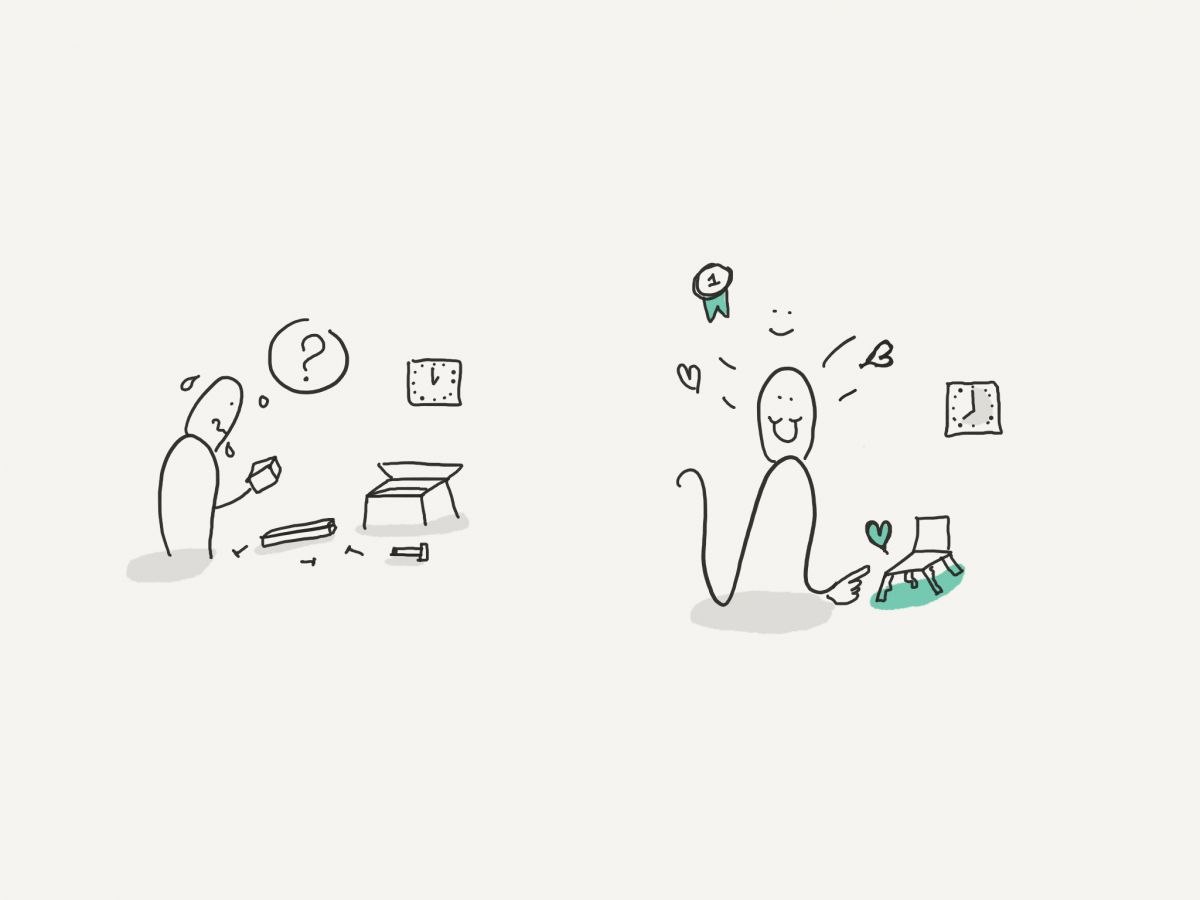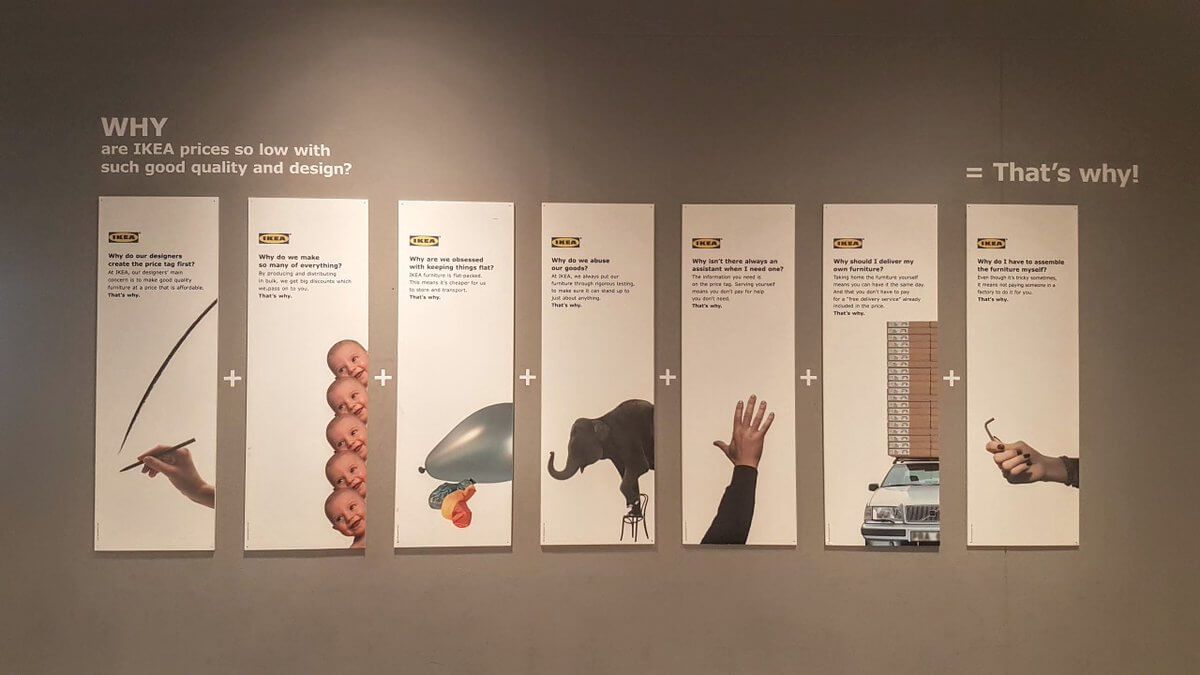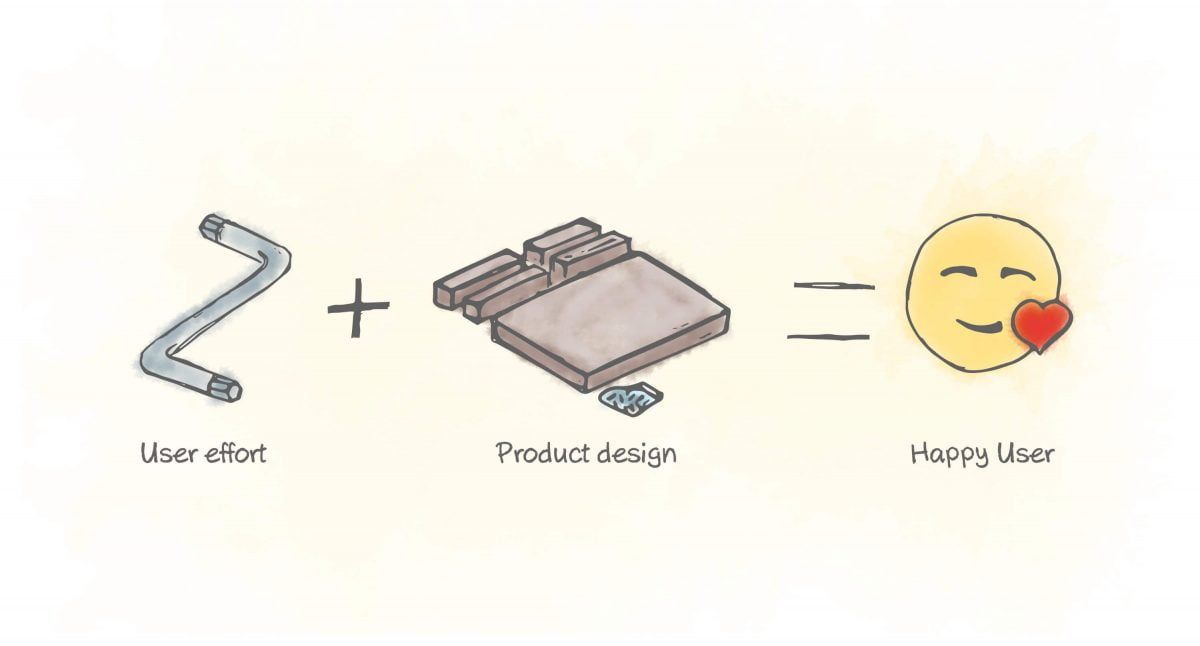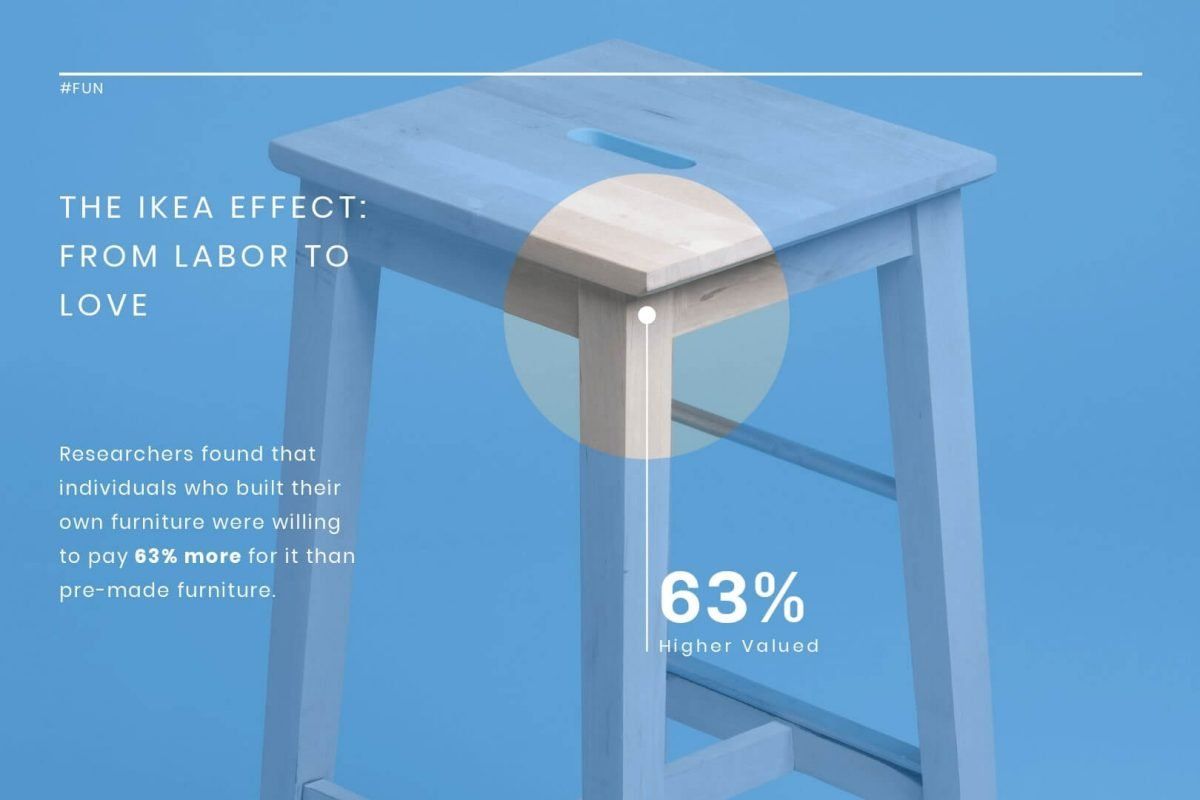In behavioral economics, the IKEA effect is the increase in appreciation that is shown to self-designed or at least self-assembled objects in comparison to mass-produced products that are bought ready-made. The name after the furniture manufacturer IKEA and its products to be assembled by the customer was coined in 2009 by the economist Michael Norton. In terms of quantity, the increased appreciation achieved through the self-assembly of a mass-produced item almost equals the appreciation for a one-off piece individually manufactured by a craftsman.
Comparable is the endowment effect (Ownership Effect), which says that people tend to appreciate a good more valuable when they own it.
What is the Definition of the IKEA Effect?
The IKEA effect results from a 2011 study. The result of the study by the American researchers Michael I. Norton, Daniel Mochon, and Dan Ariely shows that people appreciate a self-assembled product more than an already assembled product and, with this increased appreciation, the willingness to pay a higher price goes hand in hand. The study was carried out using storage boxes from IKEA. The name “IKEA effect” was derived from this.
It is also important to know that the individualization of the product does not play a role in this project because the IKEA effect also occurred even though it was a simple standard model. The customer’s manual skills also played no role in this regard.

Causes of IKEA Effect
One of the factors is that “the fact of assembling a product oneself gives individuals the feeling of being competent and brings direct proof of this so-called competence”. In addition, the idea that they save money by buying kit products would give them the impression of being “smart consumers”.
Other possible explanations for the Ikea effect have been put forward such as “a close-up on the positive attributes of a product and the relation to effort and appreciation”. The Ikea effect is one of the few cognitive biases that seem to reflect a cause and effect link between perceived effort and valorization. Norton and colleagues ‘work demonstrated that the way in which participants’ products were valued was unrelated to owning them or “how much time spent handling them.”
What is Effort Justification?
Effort Justification is a concept coined by Leon Festinger. Effort Justification, which is related to the concept of Cognitive Dissonance, includes the thoughts that a person produces after a certain effort is spent on a certain subject in order to justify and show the effort he has made. With Effort Justification, a person feels happy for a result he has worked for, and his effort becomes more important than the result itself. With IKEA Effect, when a person installs a product he/she has bought, his happiness is related to the effort he/she has spent rather than the final product. Effort Justification and the IKEA Effect are therefore related to each other.

What is the Personal Association for IKEA Effect?
Personal Association, bir kişinin bir ürün, şarkı, film, durum veya şey ile kendi benliğini bağdaştırmasıdır. Personal Association kişinin kendi benliğine değer katmak ve kendisini anlamlandırmak için kullandığı bir araçtır. IKEA Effect ve Personal Association birbiri ile ilgilidir. Kişi, satın aldığı ürünü başarı ile kurarak, kendi benliğine değer katmakta ve ortaya çıkan sonuç ile de kendi başarısını tanımlamaktadır. Kişinin, satın aldığı ürüne emek vermesi, o ürünün değerini arttırarak, kişinin zihninde onu tanımlayan bir anı yaratmaktadır.
IKEA Effect on Parenting
IKEA Effect and Parenthood are concepts related to each other. Spending time and effort by a person on the product purchased and spending time and effort on the growth of his children over time are close situations in the human mind. With IKEA Effect, mothers and fathers are more connected to their children they spend their time, love. The hard work that has been spent by the fathers and mothers to raise the children is the reason for the Effort Justification. Personal Association and Effort Justification within the Parenting can cause the IKEA Effect on human psychology.
IKEA Effect for Cake Recipe Brands
An early description of the IKEA effect can be found in the study of the rejection of cake mixes by American housewives in the 1950s. Sales of these mixes stagnated because the housewives found them too simple: their labor and their food preparation skills were no longer needed. Only when the manufacturers changed their advertising to emphasize the housewife’s own contribution, for example by adding fresh eggs and/or fresh milk or by lavishly decorating the finished cake, did the baking mixes finally catch on.
Scientific Evidence of IKEA Effect
The IKEA effect could be scientifically confirmed and quantified through the work of Norton and colleagues. The test subjects had to inspect pre-selected, assembled furniture, and then assemble the corresponding furniture themselves according to instructions. Then they could bid for both pieces of furniture. There is a preference for self-assembled furniture. The results could be confirmed with origami figures and when assembling simple kits with partners. By using finished kits without the possibility of modification it could be excluded that the increased appreciation of one’s own work is based on individualization of the mass production.
Furthermore, the hypothesis that successful completion of their own work was a prerequisite for the occurrence of the IKEA effect was confirmed. If the test subjects had to dismantle the self-assembled objects again before bidding, there was no statistically significant increase in the appreciation. If the participants were only allowed to assemble half of the IKEA furniture, the IKEA effect did not materialize: Their bids were less than half of those who were able to finish their furniture. It is still unclear whether the IKEA effect also occurs in more demanding or high-priced projects.
Further Research for IKEA Effect
Gibbs and Drolet (2003) showed that raising consumers’ energy levels can persuade them to select more effortless experiences. But companies have been warned not to question consumers too much, so they can’t complete a task and therefore end up unsatisfied. Research by Dahl and Moreau (2007) suggests that customers are more satisfied when there is a limit to the amount of creativity they can express when assembling a product.
Conclusions of Scientific Researches for IKEA Effect
Experiments carried out by Norton and his colleagues showed that the act of assembling a product itself influences the value placed on the product. The results suggest that when people build a specific product themselves, even if they do a poor job, they will judge the end result to be better than if they had not put in the effort to make it.
According to Norton and his colleagues, participants “saw their amateur creations as of equal value to expert creations and expected others to share their opinions.” It is certain that work leads to love only when it leads to a task carried out completely and successfully. When participants go up and then destroy their creations or fail to complete them, the Ikea effect wears off. The researchers also concluded that “work increases the value placed on objects for both tinkerers and novices”.
The researchers noted that using simple Ikea boxes and Lego pieces, which did not allow for customization, did not prevent participants from manifesting the Ikea effect.
IKEA Effect on Animals
In a laboratory study published in 2010, neuroscientists from Johns Hopkins University found that a similar effect was also observed in mice. In the experiment, the laboratory mice had the choice between two food sources: To get the sugary liquid with flavor A, they had to press one of two levers. To get the sugary liquid with flavor B, they had to push the other lever. Gradually, the amount of work for one of the two flavors was increased. The mice had to press the corresponding lever up to 15 times. The effort remained the same for the other flavor. After returning to the home cage, the mice showed a significant preference for the flavor that they had to work harder for.
IKEA Effect on Trade
Tervooren warned business owners that they could “reap significant rewards by making the Ikea effect work for their customers. As soon as possible, let them personalize the products and services offered to them. Let them feel that their own creativity and effort are found in what they need from them. They will be prepared to pay more for it. “
An article in Forbes in 2012 advised salespeople, “If your customers assemble your product themselves, they’ll like it more” but also added, “that a clear and precise assembly process without any risk of frustrating consumers is essential.”.
Creators of computer applications were urged to take advantage of the Ikea effect by providing “sample data, defaults and editable templates to help make the application alive in the eyes of users, full of content and content. connections. Then send quick trigger emails and tips so people can engage with that content – even if it’s just moving a card on a board or replying to an email. This helps reduce the fear and frustration felt by working on a new product while learning it. Manufacturers of computer products such as Wistia, Basecamp, and iDoneThis for example were guided by the Ikea effect for their launch.

Consumer rights activists have warned consumers of the Ikea effect, saying it could do harm to create or design ideas or products that ultimately aren’t that good. On the other hand, an article in Psychology Today suggested that” if you can’t decide whether to buy something pre-assembled or to assemble it yourself, think about the smile that will light up your room. face when the work is done thanks to efforts that you think are unnecessary at the present time. Saving yourself some work may just cost you a little bit of happiness. “
Norton and his colleagues have alerted the public by pointing out that the Ikea effect could cause people to overestimate their goods by offering them for sale. For example, “people might view improvements they’ve made to their home – such as the cobblestone path they’ve laid with their own hands – as things that increase the value of their home for more than buyers who see only one path. “. Mochon further answered a question in the following terms: “Consumers will never understand that Ikea makes them feel dumb just to sell more tables. I am not sure that the cranking action is towards Ikea.”
IKEA Effect on Consumers
Consumer writers have warned customers against the IKEA effect, noting that it “can be detrimental when creating or conceiving ideas or products that, in fact, may not be that great. On the other hand, a 2012 article in Psychology Today suggested that “if you’re having a hard time deciding between buying something precompiled or putting it together yourself, the extra work that might not be worth it now might. Well, put a smile on your face when you’re done. Saving your work could cost you a little happiness.”
Norton and his colleagues warned that the IKEA effect could lead people to overvalue their own belongings when offering them for sale. For example, “people may see the improvements they have made to their homes (such as the brick walkways they laid by hand) as increasing the value of the house for more than buyers, who see only a shoddily-built walkway.” And Mochon have told an interviewer that if customers “ever found out that Ikea was making them feel dumb just to sell more tables, I’m not sure what the backlash would be against Ikea.”

IKEA Effect on Marketing
Based on the findings of the study, companies could now expand their range to include higher-priced DIY products. The problem, however, shows in the fact that the higher appreciation that benefits the self-made product only occurs after successful assembly. This means that the willingness to pay higher prices only arises in retrospect. When selecting the product, the additional effort and the time to be invested are present instead.
The company must therefore first convince the customer to buy a DIY product. Effective arguments are a higher degree of options for customizing the products and, especially for the furniture industry, shorter delivery times than for assembled products. In addition, the structure of the product should not be too complicated and follow detailed and understandable instructions.
Why is IKEA Effect Important for People?
Why would customers spend more money even though they have to assemble the product themselves? There is a deep-seated need for self-efficacy in people, which is why it is satisfying to do things yourself and to be able to exert a direct influence on the environment. However, if the assembly is not successful, instead of increased appreciation, frustration occurs. The effect does not come to fruition because the self-imposed challenge could not be mastered.
What are the Exceptions of the IKEA Effect?
People who suffer from impostor syndrome, often see little or no value in their own work results. These employees underestimate and constantly question themselves, have an absolute claim to perfection, and are never satisfied with themselves. Even if they did a more than perfect job. As a manager, you can help these employees by objectively evaluating their performance in a concrete and comprehensible manner and by showing how good their performance is. If you do this over a longer period of time, you can significantly increase their motivation and self-esteem, self-confidence, and decision-making ability.

Last Thoughts on IKEA Effect, Marketing and Holistic SEO
IKEA Effect shows that consumers find a product that they labored more valuable than a product they do not give effort. IKEA Effect causes the purchasing behavior of consumers to be affected in favor of products that take a long installation process and require labor. IKEA Effect relates to Holistic SEO in two ways. With the IKEA Effect, an SEO Agency can make its customers more connected and cared about the SEO Project they work with. With IKEA Effect, a company can increase its search volume, increase the digital interest in its products and increase the search activities for its Product Entities, so the relevant Brand-entity will come to a more important point in its industry and in the perception of Search Engine.
IKEA Effect Digital Marketing is an important concept related to Holistic SEO and Consumer Psychology. As new information about the definition and scope of the IKEA Effect comes to light, we will continue to update our IKEA Effect article.
- Sliding Window - August 12, 2024
- B2P Marketing: How it Works, Benefits, and Strategies - April 26, 2024
- SEO for Casino Websites: A SEO Case Study for the Bet and Gamble Industry - February 5, 2024


